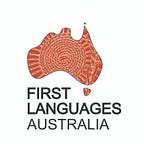Case study — Schools and Secwepemctsin language revitalisation in Canada
Prepared by Arathi Raghunathan, for Global Lessons: Indigenous languages and multilingualism in school programs
Roughly thirty Indigenous languages are spoken in British Columbia, Canada. All are endangered and have encountered decades of unsupportive education policy (McIvor and Ball, 2013). But all over Canada communities are undertaking language revitalisation programs and holding workshops and conferences to share ideas, plan revitalisation efforts and set short and long-term goals. Many individual speakers and groups strive to speak only their language to one another, within families as well.
In rare cases, children have access to education in an Indigenous language, such as in Secwepemc territory (Ball & McIvor, 2013). Secwepemctsin (the Secwepemc language), an eastern dialect of the Secwepemc territory is part of the Interior Salish language family, the traditional language of Adams Lake territory. There are very few speakers remaining, who learnt Secwepemctsin as their first language.
Chief Atahm School is one of the few immersion schools in British Columbia. It started in 1987 as a language nest, following the models of “Te Kohanga Reo” (Māori) and “Aha Punana Leo” (Hawaiian), with the aim to create more speakers in the language. A concerned group of parents then established the school in 1991 with the goal to increase the number of fluent speakers in the community. There were 22 fluent speakers when the school was established. It continues to be a parent-operated school where the staff, seniors and parents work together to achieve the school’s goal. The program offered spans the generations — infants to adults.
The language nest provides a three-day-a-week language immersion environment enabling infants and toddlers to learn the language. It also helps parents to bring the language back to their homes and daily lives. To ensure that the language learning does not end after pre-school, an immersion program from nursery to Grade 3 was implemented along with arithmetic, science, arts and social studies courses. From Grade 4 to Grade 9, a dual language program divides time between Secwepemctsin and English. By 2010, around 100 children had benefited from this program. The school also offers evening and weekend classes for adults. The growing numbers are a sure sign of positive outcomes.
Thompson Rivers University also strives to sustain and revive Secwepemctsin by offering students certification (Teacher Regulation Branch, a three-year program) that enables them to learn and teach First Nations Language and Culture in public, private and First Nations schools.
Across British Columbia, a range of other language revitalisation and learning programs are pursued. First Peoples’ Council Language Programs such as the Master-Apprentice Program, Language and Culture Immersion Camps and Pre-School Language Nests are seen to be helping support new speakers and to improve the fluency of existing speakers. Archiving and teacher training are also a focus.
There has not been an exponential increase in the number of speakers of the Indigenous languages of Canada. The growth is slow and they continue to be endangered, but it is headed in the right direction.
Key lessons from British Columbia case study:
· Concerted efforts through language immersion programs can increase the number of proficient speakers
· Language revitalisation efforts are best supported by activities at all levels — from early childhood to tertiary, and out of school community activities
· Dedicated teacher accreditation programs are necessary to build strong speakers and language educators.
References
Chief Atahm School. (2017). Retrieved September 28, 2017, from http://www.chiefatahm.com/
Connecting Stories Project Videos. (2017). Retrieved September 28, 2017, from http://www.chiefatahm.com/WebPages/connectstory_videos.html#
McIvor, Onowa. (2009). Strategies for Indigenous Language Revitalization and Maintenance. Encyclopaedia of Language and Literacy Development. Canadian Language and Literacy Research Network. Retrieved January 30, 2017, from http://www.ecdip.org/docs/pdf/Language%20Revitalization%20&%20Maintenance%20MCIVOR-CLLRNET.pdf
Report on the Status of B. C. First Nations Languages. (2010). Retrieved September 28, 2017, from http://www.fpcc.ca/files/pdf/2010-report-on-the-status-of-bc-first-nations-languages.pdf
Thompson Rivers University. (2017 May 3). Growing and sustaining the Secwepemc language at TRU [Video File]. Retrieved September 28, 2017 from https://www.youtube.com/watch?v=C9i0cotMWd4
